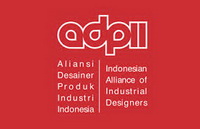Penelitian perancangan sarana bantu belajar bahasa untuk anak tunarungu dengan pendekatan participatory design
Abstract
This research focused on deaf students in the third year of junior high school. When communicating in writing the structure of the grammar of deaf students is often reversed, ironically, they’re expected to pass on national test for normal students. This study uses a participatory design approach because all stakeholders involved in the design process are considered as coworkers in decision making. The designer, teacher and student are the stakeholders involved in this research. The group discussion forum was conducted to understand the types of games that are easy but fun to play for deaf students and to get feedback and recommendations for improvements from the games that have been made. This study produced language learning aids in the form of educational grammar games for third-year deaf students of junior high school. The theme of the grammar game that was appointed was adapted to the practical lessons at Yayasan Karya Dharma Wanita (YKDW), namely cooking and salons. The results of the study were tested in another deaf school which is Pangudi Luhur and the results were obtained that the product could be well received, even though they have different educational approach from YDKW. This study finally concluded that in Indonesia there isn’t standardization regarding the deaf kid’s education system.
Key words: product design, language learning tools, deafness
Full Text:
PDFReferences
Afandi, M. (2013). Modul Participatory Action Reseacrh (PAR). Modul Participatory Action Reseacrh (PAR). Surabaya: Lembaga Pengabdian Masyarakat IAIN Sunan Ampel.
Baker, B., Dearden, P., & Thomas, S. (2003). Consultation for a Change (PDF). Conference Proceedings. Wolverhampton: CIDT/RRI/Oxfam/SPA.
BisaMandiri. (2015). Klasifikasi Anak Tunarungu. Retrieved November 6, 2017, from https://bisamandiri.com/blog/2015/10/klasifikasi-anak-tuna-rungu/
Elliot, J. (1991). Action research for educational change. Milton Keynes, UK: McGraw-Hill Education.
Involve. (2005). People and Participation. Retrieved November 6, 2017, from https://www.involve.org.uk/resources/publications/practical-guidance/people-and-participation
Isma, S. T. P. (2012). Signing varieties in Jakarta and Yogyakarta: Dialects or separate languages. Tesis. Tidak Diterbitkan. Hongkong: Chinese University of Hong Kong.
Katoppo, M. L. (2018). Desain sebagai generator: bagaimana desain menjadi terang bagi semua orang. In L. P. Santyaputri & E. Irwandi (Eds.), Prosiding Seminar Nasional: Desain Sosial (Perubahan sosial, desain kolaborasi dan media sosial).Tangerang: Fakultas Desain Universitas Pelita Harapan.
McTaggart, R. (1994). Participatory Action Research: issues in theory and practice. Educational Action Research, 2(3), 313–337. https://doi.org/10.1080/0965079940020302
Melinda, E. S. (2013). Pembelajaran adaptif bagi anak berkebutuhan khusus. Jakarta: Luxima.
Sadjaah, E. (2005). Pendidikan bahasa bagi anak gangguan pendengaran dalam keluarga. Jakarta: Depdiknas Dirjen Dikti.
Stringer, E. T. (2013). Action Research (4th ed.). Thousand Oaks, California: SAGE Publications, Inc.
Yang, C.-F., & Sung, T.-J. (2016). Service design for sosial innovation through participatory action research. International Journal of Design, 10(1), 21–36.
DOI: https://doi.org/10.24821/productum.v3i6.2265
Refbacks
- There are currently no refbacks.
p-ISSN 2477-7900 | e-ISSN 2579-7328

This work is licensed under a Creative Commons Attribution 4.0 International License.
Like & Follow Us










